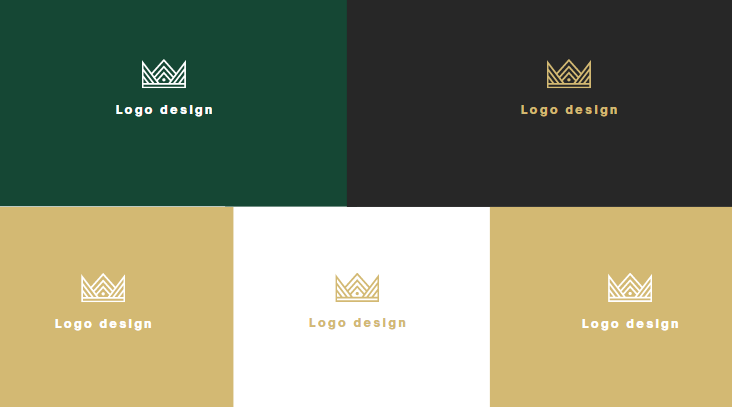5 steps to follow when creating logos for companies
Designing or creating logos and visual identities can be overwhelming for many graphic designers, but don’t be intimidated by anything! Designing a logo for a company or project is the most rewarding thing you can do if you are a graphic designer.
In this article, I want to explain five steps that we must follow when creating logos. I think they will help you take into consideration all the actions to be taken. Here I am not going to talk about the logo’s characteristics or your solution to deliver. I will only list and develop a series of steps to follow that are key when creating logos.
What is a logo and what is it for?
Before commenting on the steps to create logos, I think it is interesting to review what a logo is and what it is for exactly. A logo is a graphic or symbolic representation of a brand whose mission is to identify the company, not promote it. We need to distinguish between promotion and identification.
The whole point of a logo is to help people remember you, for better or for worse. Distinguish yourself from the competition. A well-designed logo can be key to impacting the audience and attracting potential clients.
Before creating logos, keep the following in mind. A logo must be simple, representative and original. With these three characteristics, we will favor the logo being also scalable, long-lived, memorable and relevant for the audience. Remember logos have an exclusively identifying mission, never promotional.
5 steps to follow to create a good logo
Now that I have made it clear what a logo is and its main function, we can begin to list the steps to follow to create logos for our clients. It should be noted that these five steps are not exclusively steps before the logo design process. Instead, we are talking about complementary steps. We will need to carry out steps 1, 2 and 3 before the design process, while the last two will examine the proposals made after the third step. Let’s go with it.
- Sit down with the client
To create logos, we must always start with the first interview phase, where we will sit down with the client to define the brand and prepare a briefing. Graphic designers help our clients to find the best solution for their problems. To better perform our profession, it is vital that we establish a close and trusting relationship with our clients.
In this first phase of the interview, we will need to listen, observe, learn, gather, understand, and even interpret the company through our client. We need to get an objective point of view of the context and its needs.
Reflect and assess what it is that makes that brand unique. A well-defined brand will help attract potential customers. When creating logos, the design should try to coordinate not only with the company’s values but also with the values that they have in common with their audience.
- Conduct an investigation phase
When creating logos, the more information we have, the easier it will be to design a solution that reflects what we have in mind. Once we have a better idea of the intention behind the logo design and who is the brand behind it, we can start to gather some inspiration and verify at the same time what the competition is doing.
A good way to start is by evaluating your competitors’ logos. What logo format do you use the most? Are we talking about logos, isotopes, image types or isologous? Where and how do they apply their visual identity?
- Choose the most appropriate format
Once we have learned everything in our power about the client, to create logos, we must meditate on what will be the best approach to the brand. For this, we will ask ourselves a very simple question. Should we create a logo or do we use an isotype as well?
The approach that we make to each brand will depend on several factors and on each case, but it is usually advisable to do without the symbol unless there is a need to include it. Why? The reason is quite simple. A new isotype is a symbol unknown to people. It takes time, money and resources. In addition, people are exposed to a constant saturation of icons and symbology.
But, on the other hand, when an isotype is correctly assumed and learned by society, it becomes a representative symbol of the brand that can bring together a lot of communication power. Let’s think about brands like Nike, Apple, Mercedes, it is impossible that their logos do not come to mind. This would be a strong reason in favor of the use of an isotype.
So it will be necessary for us to study the feasibility of using symbols or not in each case. For example, if the company’s name is very long, perhaps using a symbol can help us unify the text of the name and increase its visual impact.
Anything that we write in a logo, whether inside a symbol or in a word, must be legible. We are identifying a company or brand. People have to find it easy to read at first glance. And remember, the reading of a logo should not depend on interpretations or explanations.
- Test the logo
Once we have a series of logo proposals adapted to the context and scenario of our client, we can proceed with step number 4: we test all our logo proposals. We need to assess well what are the scenarios where the logo will be applied. Study well its readability, adaptability and representativeness. Once again, it will be good for us to remember the characteristics that a good logo must-have.
If we are convinced that our solutions are correct, we can test them with the help of Mockups. The mockups are photomontages made to design programs. Graphic designers make use of them to show the client how the projects would look, in this case, the logo proposals.
Before presenting anything to the client, we need to ensure that our solutions work. Do not be afraid to discard the first drafts if you think they do not empathize with what you want to communicate. We are going to need to evaluate a few ideas until we find the right solution.
Always ask yourself how a potential client would perceive each proposal once we have included it under some mockups. These photomontages will help us get a better idea of whether or not they can work.
- Sift and select the logo
Once you have examined all your proposals, it is time to select your favorites. Always try to be objective and select the logo proposals that we consider to solve the client’s problem best. Of course, assess well the number of logo proposals to present to your client. It is proven that the more options they have to select from, the longer it will take people to decide.
Be smart. Go ahead and sift through your proposals. Select and present your favorites, that is, those that you think are best suited as a solution for your client. I’m not talking about the ones you like the most since your personal opinion won’t contribute anything here. Always be objective and help yourself with the data that you have obtained in the first steps.
It is very likely that the client will choose a logo for its functionality, and that is very good. Still, it is your responsibility to ensure that these solutions also have artistic value. So try to include in your final selection the sketches where these two characteristics coexist.
Final words
To get a good logo, we need to perform a series of steps that will help us narrow the options and focus the shot much more. We need to approach the logo design from a more methodical point of view. I hope you have found these five steps helpful when create logos. Do you think I have missed any on the way? Please, go ahead and leave it to me in the comments.



